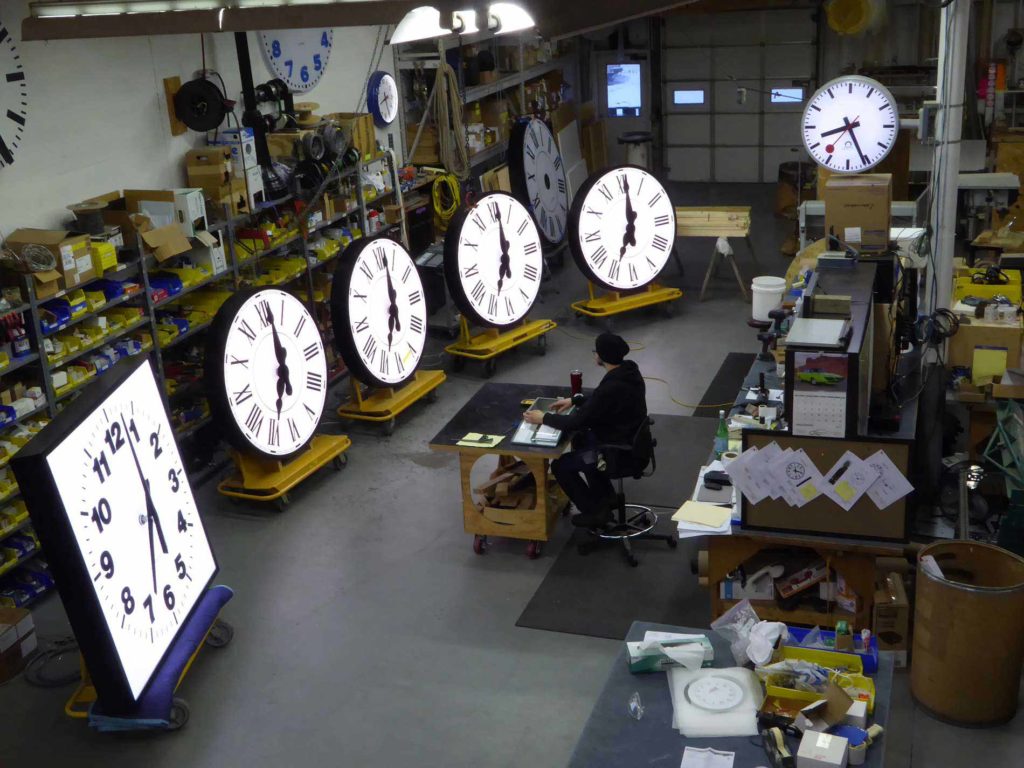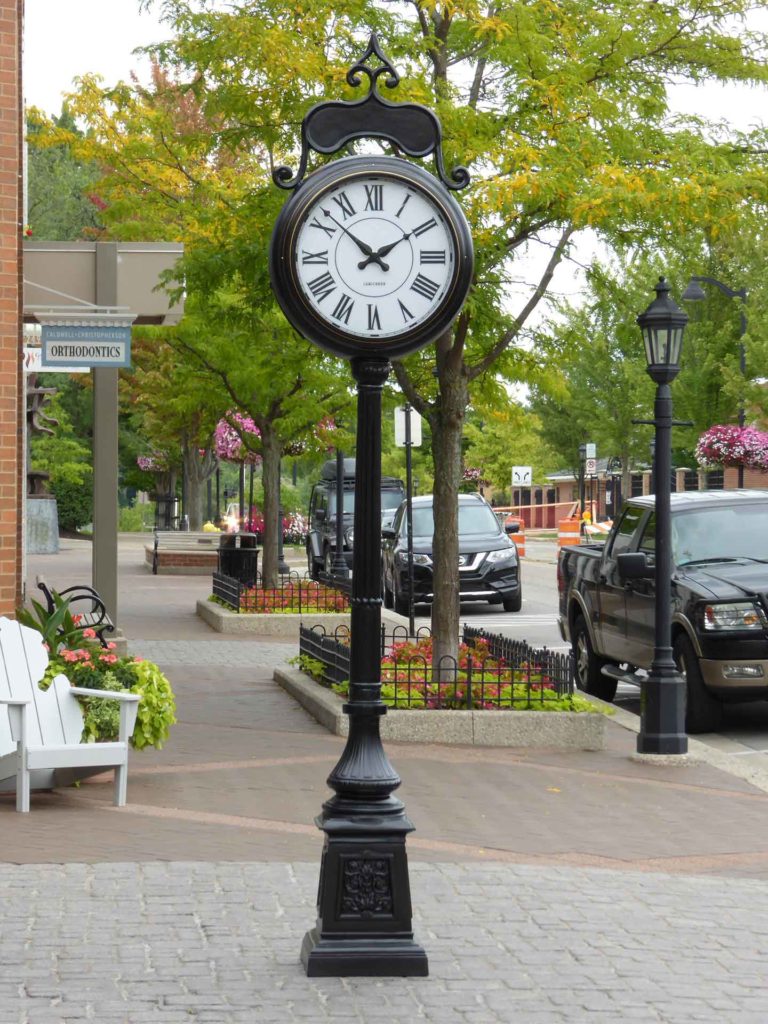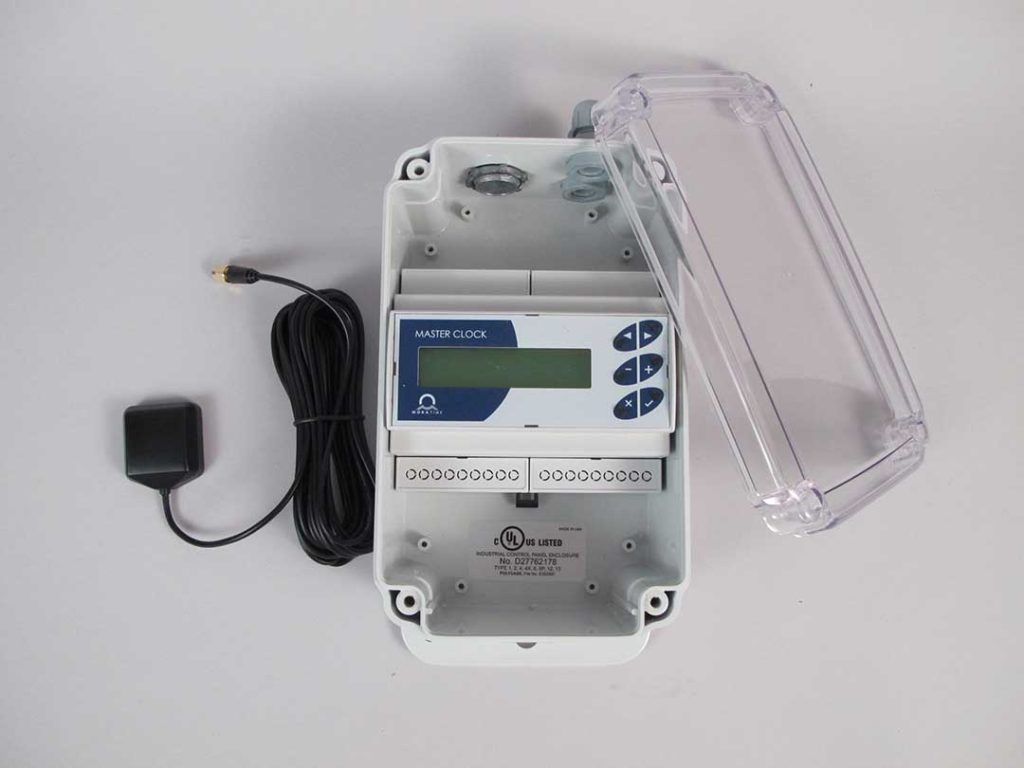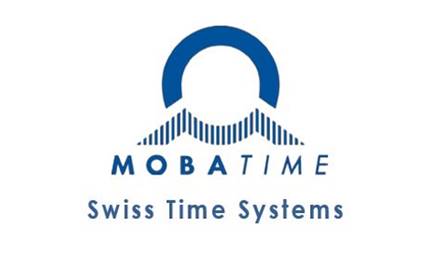
When I tell people that I build clocks for a living, I can only imagine their minds immediately jump to a vision of me in a dimly lit back room surrounded by shadowy, ticking antiques, and squinting through a magnifying glass as I carefully align shining brass gears with a pair of tweezers. The reality, however, is far different. While there is certainly still a place for the archetypal clockmaker diligently hunched over the workbench, especially in the field of watchmaking, here at Lumichron things are a little more industrial. Rather than the wood or brass timepiece adorning your grandfather’s mantle, our specialty lies more in the types of clocks you might see as you walk around the city.
Schools, banks, businesses, churches, factories, streets, and parks – old and new: These are the canvasses upon which our clocks reside. Modern materials like fabricated aluminum housings, long-life LED lighting, UV-resistant polycarbonate, architectural powder coatings, and electronic timekeeping equipment are the paints that bring our customers’ visions to life across the globe. Whether the project calls for a contemporary or a classic design, using these materials allows us to craft clocks that will stand the test of time, seamlessly blending with their surroundings while simultaneously making them stand out.

Today’s commercial clocks are very much a blend of the old and the new in many ways, bringing together the traditional and the state-of-the-art. A post clock, or street clock as they are often called, is a perfect example of this. The fires of the forge smolder to life as they did in the days of yore, molten metal slowly cools in the mold, and then emerges a tall, elegant form – the post clock. Picture standing at dusk beneath the warm glow of the dial, and it might be easy to think this clock is an antique. It certainly has the trappings of an antique (except the rust), such as a classic Roman-style face, pinstriped bezels, and a textured metal exterior. Inside, however, you might be surprised to find not an old oily clock motor and a lightbulb, but a GPS antenna peering at the sky, feeding synchronization signals to an electronic master clock, which controls not only the movement of the clock hands to be as exact as your cell phone, but can activate the illumination on an ever-changing schedule in accordance with the astronomical timetable of the local sunrise and sunset. No pendulums or reset stems here; when daylight saving time comes you won’t find the clockmaker scaling his ladder to adjust the clocks. Today’s equipment allows the clocks to automatically self-adjust after daylight savings and power outages. Once they leave the shop and are installed, the post clocks are quite self-sufficient, standing through the seasons and marking the time for passers-by.

This duality of old and new is part of what makes commercial clocks special, I think. Every clock we make is continuing a long tradition that goes back centuries. Every clock is a little bit different, custom-designed using today’s technology to fit the specifications of the project, and then assembled by hand here in the shop. There are also times when we travel to faraway towers, ascending the aged steps to inject new life into clocks that have long lain dormant, giving them fresh hearts and fresh hands to tell the time once more. It is amazing to think that the clock above my desk ticks at exactly the same time as Lumichron clocks across the globe, be they atop ivy covered East coast towers, California cupulas, or as distant as Moscow or Antarctica.

